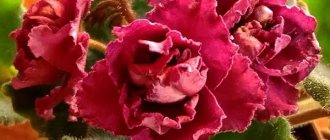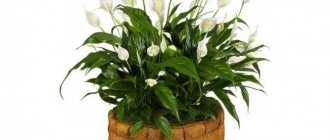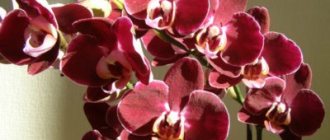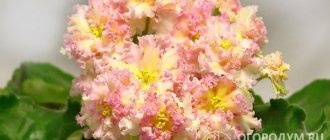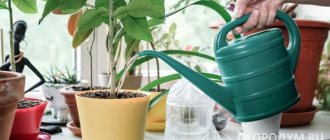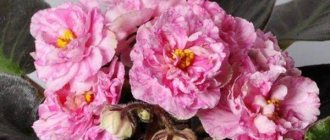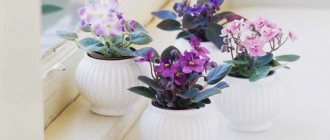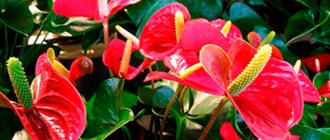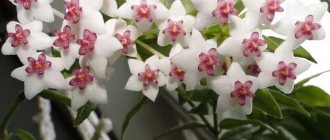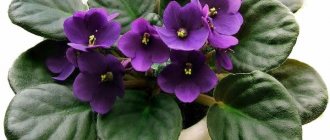You can confess your love without buying luxurious bouquets, which, at best, will go in the trash in a week. Houseplants, no worse than cut flowers, can tell about the feelings of the person who gave them. Girls will truly appreciate them, because with proper care, these green pets will delight their owner for years.
Hoya Kerry
Hoya Kerry is rightfully considered one of the most romantic plants, because its leaves are heart-shaped. Caring for this succulent is simple and even an inexperienced plant grower can handle it. And hoya will reward those who are especially patient with fragrant flowers resembling stars.
Rumor has endowed it with magical properties: hoya connects the masculine and feminine principles and brings peace and harmony to the house. The caramel smell that spreads during the flowering period may be too strong only for people with allergies. And hoya is not only pleasing to the eye and soothing - the juice of its leaves can be used as a remedy for treating boils.
Types and varieties of dicentra
Dicentra magnificent (Lamprocapnos spectabilis, formerly Dicentra spectabilis)
In the darkened part of the garden it grows up to 1 m, on the sunny side it does not grow higher than 30 cm. Dicentra magnificent
This is the most fastidious type of plant, requiring close attention: if you water it at the wrong time in dry weather, it immediately begins to wither. But it is extremely undesirable to over-water it, and it does not tolerate close groundwater. This is such a whim.
Beautiful Dicentra (Dicentra formosa)
Emigrated to Russia from North America. The height of the bush varies from 30 to 60 cm, depending on the shady or sunny side of the planting. Dicentra beautiful Peduncles are much higher than those of Dicentra magnificent. Lavender flowers are elongated, graceful, I would call them curvy. The flowering period is long: from late May to early September.
Variety 'Golden Tears'
A climbing perennial, decorated with yellow and pink inflorescences, reaches a height of 3 m. Long-lasting flowering: from the beginning of summer until the first frost. He is not picky, feels great in the shade, and requires support. Di The support grid can be made from ordinary wooden slats; 2-3 years after planting, the climbing branches of the plant will completely cover it.
Variety 'Candy Hearts'
The plant is up to 15 cm high and adapts perfectly under the shade of garden trees and tall shrubs.
Di Heart flowers are distinguished by a delicate pink-purple hue. The leaves resemble fern foliage. This unique perennial can be used to make flower mats in the garden. Moreover, if you walk on such a mat, the plant quickly recovers due to the flexibility of the stems and powerful root system.
These are my charges, each with their own character, each attractive in their own way. All the troubles of growing them pay off handsomely when you look at their blooming splendor. Does dicentra grow in your garden?
Anthurium
The next participant in this collection has heart-shaped flowers, not leaves. This anthurium, or as it is popularly called, “male happiness,” is a very beautiful and bright indoor plant. It can bloom in both summer and winter. Its flowers, even cut ones, can remain fresh for up to two weeks.
Red anthurium is often purchased for Valentine's Day, its glossy red flowers and equally shiny dark green leaves provide a wonderful contrast and look very impressive. In addition, it brings its owner success in business: from work to love, gives him self-confidence, improves his mood, and relieves fatigue. This flower is ideal for those born under the sign of Leo; it can be their patron and talisman.
Planting in open ground
The best periods for planting plants in open ground include the end of April - beginning of May, and September. It is very important that the roots have time to take root before the cold weather sets in. The soil for planting must be prepared in advance. It is best to prepare the site for spring planting in the fall, and for autumn planting in the spring.
You need to be serious about choosing a place for planting, because Dicentra will occupy it for more than one season, and every year it will grow and fill more and more space. It is necessary to take into account that under the bright sun, flowering is shorter, the flowers quickly fall off, and the leaves often fade, so planting in partial shade is preferable.
Favorable times for planting plants in open ground are the end of April - beginning of May, and September.
The plant is very sensitive to excess water. Stagnation of groundwater, melt or rainwater will lead to rotting of its fleshy roots. The soil for planting must be pH-neutral, well-drained and fertile. Compliance with these conditions contributes to the rapid growth and abundant flowering of Dicentra magnificent.
Abundant flowering of dicentra
Site preparation includes digging up the soil and adding humus at a rate of up to 5 kg per m2. If the soil is heavy, then river sand and leaf soil are added to it. Then the planting site is well watered, adding mineral fertilizer to the water. After two weeks, they begin to prepare the holes. Their size is determined relative to the size of the root system; on average, a hole is dug with a diameter and depth of about 50 cm.
To prevent the accumulation of excess water, leading to rotting of the roots, expanded clay or pebbles are poured onto the bottom, and then the excavated soil is mixed with peat compost, wood ash and sand. After preparation is completed, planting can begin no earlier than 15–20 days later.
It is preferable to plant Dicentra in partial shade, so the flowering will last longer and more intensely.
Amateur gardeners rarely grow plants from seeds, since this process is labor-intensive, and the result does not always live up to expectations. To germinate the seeds, you need to maintain a temperature of 18-20°C, if successful, this part of the process will take about 30 days. As soon as the seedlings have a pair of leaves, they are ready to be planted in open ground. If it is planted before winter, it definitely requires film cover.
Dicentra seedling roots
Growing Dicentra with seeds also takes a lot of time because it blooms no earlier than in the third year. Therefore, planting seedlings is preferable. They are bought ready-made or propagated independently by cuttings, which are used as young shoots. Seedlings are harvested in the spring. They are planted in the same way as seedlings under film. Rooting of the seedling occurs within several weeks. Then, next spring, they are planted in a permanent place, while trying to avoid injury to the roots.
The best time for planting is May. But before you start planting, you must wear protective gloves. This is a necessary safety measure when working with poisonous Dicentra roots. The remaining parts of the plant also contain large amounts of alkaloids, so it should be handled with the utmost care.
When planting the plant, it is necessary to use protective gloves, since the roots of Dicentra are poisonous.
When safety precautions are observed, it is time to install the seedling in the hole. A properly placed seedling is covered with fertile soil and generously watered. To protect the bush from drying out and weathering of the soil, you need to use mulch, for example, from fallen leaves, pine needles, sawdust or humus.
Caladium
Caladium, unlike its predecessor, blooms for a very limited period of time. But to be beautiful, he doesn’t have to do this at all. It takes revenge with its unusual decorative leaves, which can be white, green and even red or burgundy. For their amazing beauty, the plant is called “angel wings”, “elephant ears” and “heart of Jesus”.
This handsome man is quite capricious, but for the sake of his gorgeous leaves, you can try to provide him with the best care.
Pests and diseases
The plant has high immunity, so it is immune to pathogens and insects. But still, infection is not excluded. Most often, gardeners find ring spot and tobacco mosaic virus on the dicentra. The aboveground part of the plant is covered with white stripes. Leaves become spotted. Changes in color, deformation of peduncles and slow growth indicate the presence of mycoplasma disease. The development of these diseases is facilitated by frequent and abundant watering, as well as lack of ventilation. It is recommended to disinfect the substrate with a five percent formaldehyde solution. After treatment, dicenters are planted only after a few weeks.
Philodendron
Philodendron also features shiny, heart-shaped leaves. This vine tends to grow luxuriantly: a lot of hearts going down the wall look very beautiful.
Like the rest of the plants from this collection, it has positive energy that has a good influence on its owner, her relationships with others, especially with the man who gave the plant.
Reproduction methods
The tropical beauty has provided for its own reproduction and not only makes it possible to obtain new specimens from seeds that ripen after flowering, but also actively produces children. Therefore, to propagate Guzmania, everyone chooses the most convenient method.
Offspring
The indoor guzmania flower reproduces beautifully and readily by children. After the guzmania has flowered, its “head” gradually dies off, but nearby the mother specimen gives birth to several small offspring. They will serve as good material for propagation and at the same time retain the specific properties of the crop. The process looks like this:
- carefully remove the plant along with the earthen lump from the pot;
- separate the babies with a sharp knife;
- treat the cut areas with crushed coal;
- plant the specimens in different cups with loose soil;
- pour and cover with film or a glass jar.
If all the plants are planted in one container, then they will have to be replanted later, and guzmania does not like to be disturbed. Therefore, it is better if the children are transplanted into different containers.
Seeds
Planting a crop with seeds is more troublesome and time-consuming. Material for sowing can be bought in a store or collected independently from a flowering plant. Seeds are produced in capsules under the stipules. They are sown in containers with a mixture of peat and sand, placed in a well-lit place, covered with film. In 2-3 weeks the first shoots will appear. After 3 months, the overgrown specimens can be planted. The final transplant of guzmania is needed after six months.
How to separate Guzmania babies. Video
Alocasia
Alocasia is an original evergreen houseplant. Its leaves also have the shape of hearts, but, unlike the previous ones, it is not quite ordinary, but carved.
The plant is unpretentious in care; it is often grown in apartments and offices. However, alocasia rarely blooms under these conditions, especially if the conditions are very different from natural ones. Its flowers look like candles.
Description
Dicentra is a tall perennial plant, its average height is 100 cm. Large pinnately dissected leaves make the bush look like a fern. The top of the leaves is green, the bottom is smooth gray with a grayish-smoky coating. The leaves are placed on petioles up to 12 cm long. The stems are thick, fleshy, branched, densely leafy, most often erect.
Heartbreak Bush
The flowers are medium-large in size, 3–4 cm in diameter, collected in 7–15 pieces in racemes. Brushes, up to 20 cm long, are located at the end of peduncles and in the axils of the leaves at the tops of the shoots. The fruit, in the form of an oblong box 35 mm in length, has a non-falling pistil. The capsule contains smooth round black seeds, 2–8 pieces each.
Soil preparation, timing and rules of planting
Plants are planted in the garden both in autumn and spring. For indoor forcing, only autumn planting is suitable. We choose rhizomatous varieties so as not to expose people and pets to the risk of poisoning. To grow indoors, rhizomes are dug up after the end of the growing season, as evidenced by the browning and dying of leaves. Choose the strongest plant. Shake off the soil from the rhizome and let it dry slightly. After 3-4 hours it will be less brittle and will not break into pieces when divided. Divide the rhizome into several parts at least 10 cm long, each of which should have 2-3 dormant buds.
Prepare the soil for planting by mixing the following components:
- 2 parts of garden soil;
- 2 parts leaf soil;
- 1 part sand.
To make the soil looser and prevent root rot, you can add a little charcoal to the mixture.
You need a large pot - with a diameter of at least 30 cm. Drainage from small pebbles is placed at its bottom. Pour the planting mixture and plant 1-2 divisions in each container to a depth of about 12 cm.
